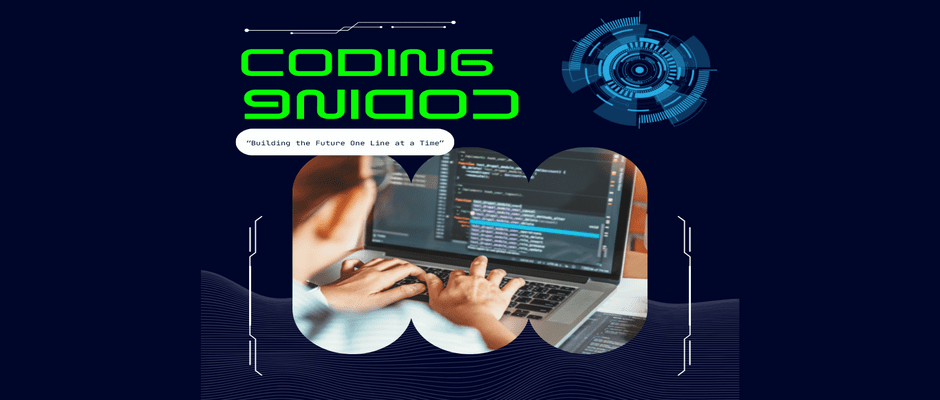✨ The Top 5 Frameworks Every Developer Should Know in 2025
Staying current with frameworks is no longer optional—it’s essential. Here’s your ultimate guide to the frameworks that will shape software development in 2025.
📈 1. React (Frontend Development in 2025)
React remains the crown jewel of frontend development, trusted by tech giants and indie developers alike. As you look forward, there are several developer frameworks to master in 2025 that will shape the future of web development.
✅ Why React in 2025?
Component-based architecture for modular, scalable apps
Integration with React Server Components and Concurrent Rendering
Massive ecosystem (Next.js, Redux, React Query, etc.)
🔗 Seamless Ecosystem
React integrates effortlessly with:
Next.js for full-stack development
React Native for mobile apps
Chakra UI and Material UI for design systems
⚡ Key Takeaway: React offers flexibility across web and mobile platforms while ensuring high performance and reusability.
🚀 Performance
React 19 brings:
Automatic batching
Suspense for data fetching
Better hydration techniques
🚄 Career Benefits
React continues to dominate job boards. Companies like Meta, Netflix, and Shopify prefer React for their products, ensuring long-term demand.
// A simple React component
function HelloWorld() {
return Hello, 2025!
;
}
🧱 2. Next.js (The Future of Full-Stack Development)
Next.js is the full-stack framework redefining modern web development.
✅ Why Next.js in 2025?
Hybrid rendering: SSR, SSG, and CSR
Native API routes for backend logic
Seamless Edge functions and streaming support
⚖️ Balanced Performance
Next.js features:
Incremental Static Regeneration (ISR)
Built-in image optimization
Server components for enhanced UX
🚧 Built-In API Routes
Next.js allows building both frontend and backend in one place.
// Example Next.js API route
export default function handler(req, res) {
res.status(200).json({ message: 'Hello from the API' });
}
⚡ Key Takeaway: With built-in APIs and edge rendering, Next.js is the go-to for performance-driven, scalable full-stack applications.
🌐 Deployment Superpowers
Best paired with Vercel, but also compatible with:
AWS
Google Cloud
DigitalOcean
📈 Job Market
Major adopters: Netflix, Twitch, TikTok, and GitHub.
🧰 3. Django (Scalable, Secure Backend Development)
Django’s “batteries-included” philosophy makes it ideal for secure and scalable backend development.
✅ Why Django in 2025?
Out-of-the-box features: auth, ORM, admin panel
High security (XSS, CSRF, SQL injection protection)
ASGI support for async tasks
🔒 Security Built-In
Used by:
Instagram for its scalability
Spotify for data-heavy features
Mozilla for security
# Django model example
class Article(models.Model):
title = models.CharField(max_length=100)
content = models.TextField()
⚡ Key Takeaway: Django is unmatched when it comes to building secure, data-heavy apps rapidly and efficiently.
⏱ Rapid Development
Quick prototyping
Reusable code
Scalable architecture
🚄 Career Outlook
Steady demand across sectors: healthcare, fintech, media, education.
🌐 4. FastAPI (The API Framework Developers Love in 2025)
Blazing fast, intuitive, and perfect for async development, FastAPI is built for 2025 and beyond.
✅ Why FastAPI in 2025?
Async-first: built on Starlette and Pydantic
Swagger + ReDoc auto-docs
Python-native (perfect for AI integration)
⚖️ Type-Safe APIs
Built-in validation with Pydantic
Fast and scalable
Low boilerplate
from fastapi import FastAPI
app = FastAPI()
@app.get("/")
def read_root():
return {"message": "Hello FastAPI!"}
⚡ Key Takeaway: FastAPI is the modern standard for building fast, type-safe, and scalable APIs, especially in AI and microservice-based projects.
📚 Machine Learning Ready
Works seamlessly with:
TensorFlow
PyTorch
Scikit-learn
✉ Deployment Ease
FastAPI works well with:
Docker & Kubernetes
AWS Lambda
Google Cloud Run
📈 Career Growth
Used by: Microsoft, Netflix, Uber, and more.
📱 5. Flutter (Cross-Platform Framework Built for the Future)
Flutter enables the creation of stunning apps across mobile, web, and desktop with one codebase.
✅ Why Flutter in 2025?
Supports iOS, Android, Web, Windows, macOS, Linux
Powered by Google (with long-term support)
Huge plugin ecosystem
🎨 Beautiful UIs
Rich widget library
Skia engine for high-performance rendering
import 'package:flutter/material.dart';
void main() => runApp(MyApp());
class MyApp extends StatelessWidget {
@override
Widget build(BuildContext context) {
return MaterialApp(home: Text('Hello Flutter!'));
}
}
⚡ Key Takeaway: Flutter simplifies cross-platform development with speed, consistency, and beauty.
⏱ Fast Development
Hot reload = rapid iteration
Easy testing and debugging
🚀 Production Ready
Companies like Alibaba, BMW, and Google use Flutter in production.
📚 Final Thoughts: Future-Proof Your Stack
Mastering these 5 frameworks in 2025 will supercharge your developer journey. Whether you’re building full-stack apps, APIs, or mobile platforms, these tools are powerful, versatile, and career-boosting.
✨ Summary Table: Framework Comparison
| Framework | Domain | Performance | Career Impact | Use Cases |
|---|---|---|---|---|
| React | Frontend | ⭐⭐⭐⭐⭐ | High | SPAs, mobile apps |
| Next.js | Full-stack / SSR | ⭐⭐⭐⭐⭐ | Very High | SaaS, CMS, dynamic sites |
| Django | Backend | ⭐⭐⭐⭐ | High | Enterprise apps, admin panels |
| FastAPI | API / Async Backend | ⭐⭐⭐⭐⭐ | Very High | AI APIs, microservices |
| Flutter | Cross-Platform UI | ⭐⭐⭐⭐ | Growing | Mobile/web/desktop apps |
📣 Call to Action
Ready to level up in 2025?
✍️ Start building today with these frameworks
📅 Follow our blog for deep dives, tutorials, and career tips
✨ Stay ahead in a rapidly evolving tech world
Tags: #React #NextJS #Django #FastAPI #Flutter #WebDevelopment #Programming2025 #DeveloperCareer


Pingback: Top 5 AI Tools to Learn and commercialize – imkiringo